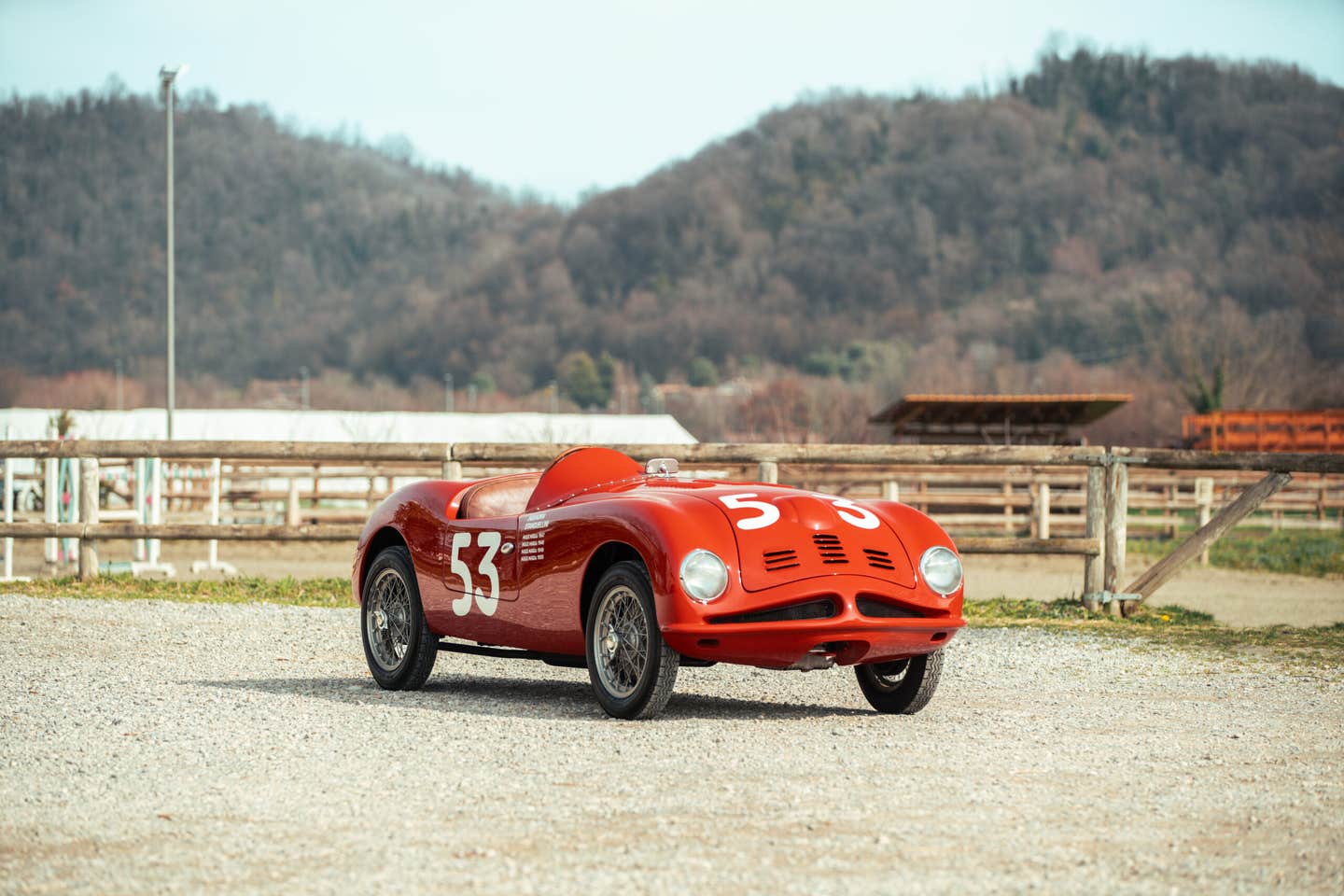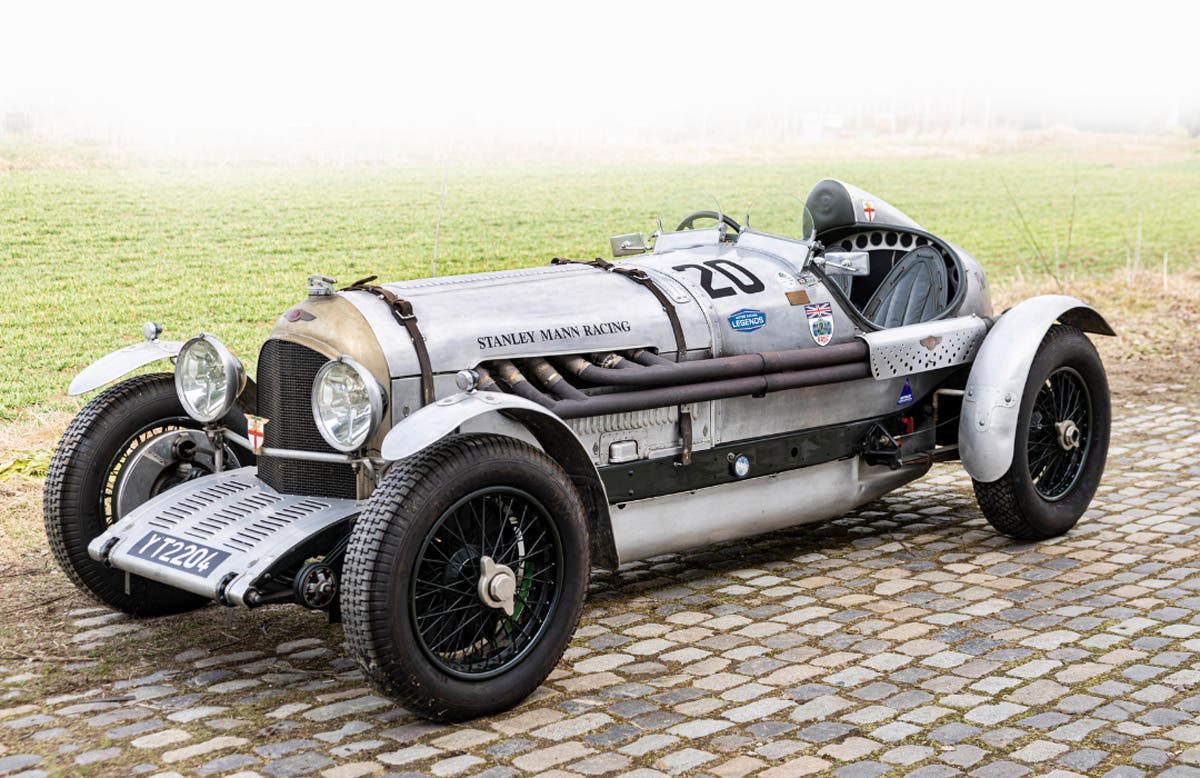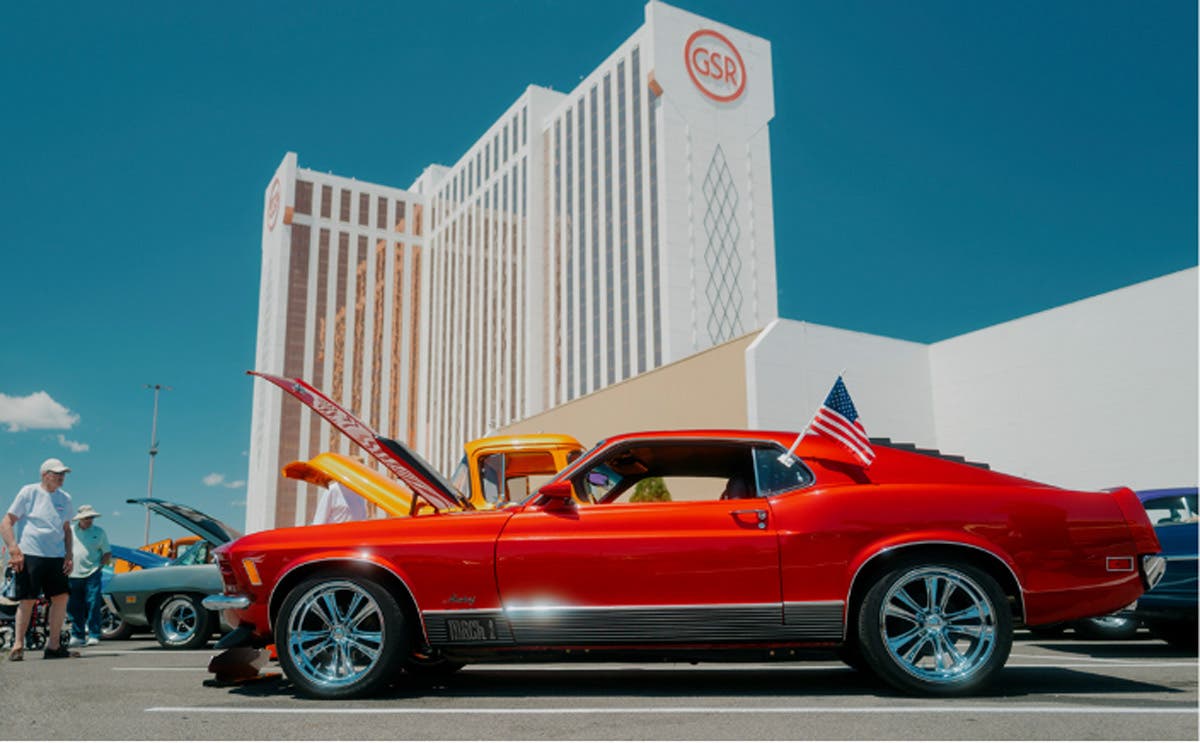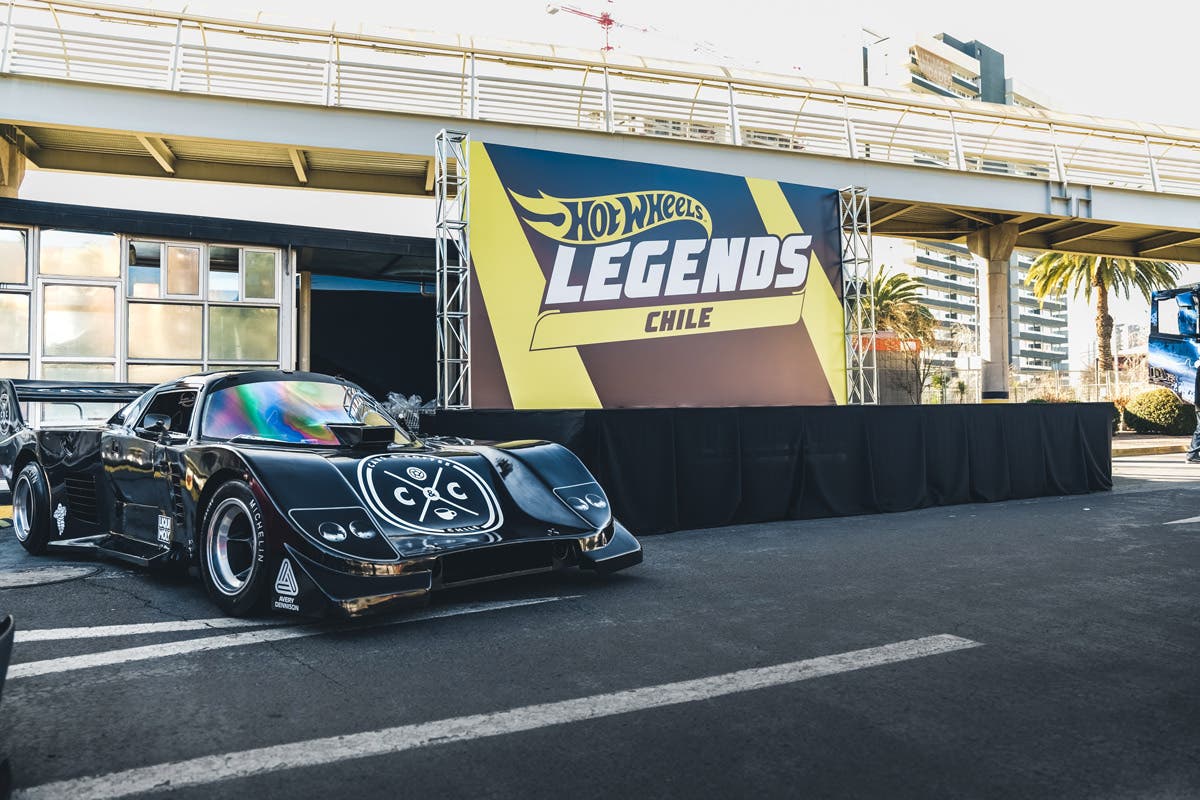The life and times of ACD Ace A.J. ‘Jim’ Hoe
The fascinating story of ACD Club legend, A.J. ‘Jim’ Hoe
Imagine having a Duesenberg Model J restored for just $6000! According to Ken Purdy’s book “Wonderful World of Automobiles,” that’s what a mechanic he called “The Duesenberg Man” charged to put a beat-up Duesenberg into “like-new” condition during 1960.
Andrew James Hoe was that man — a 47-year-old former engineer and master mechanic at the time the book was written. According to Purdy, A.J. “Jim” Hoe had worked on some 225 Duesenbergs between 1946 and 1960. Duesenberg historian Randy Ema thinks the actual number of cars that Hoe worked on was probably a bit lower, and he is most likely correct. In 1956, Hoe told a Denver Post reporter that he averaged two cars a year in his shop. However, there is no doubt that the Connecticut-based craftsman restored and repaired many Duesenbergs, did great work and knew the cars inside out.
Hoe came from a line of interesting characters and was one himself. His great-grandfather was Robert Hoe, an English-born American mechanic who manufactured steam-powered printing presses in New York City before his death in 1833. Hoe’s grandfather was Richard March Hoe, an inventor whose Cylindrical-Bed press of 1843 sped up printing and whose continuous-roll printing press of 1870 revolutionized newspaper production. Richard Hoe also held an English patent on an improved process used to grind saws. Richard M. Hoe was a Freemason, had an estate in the Bronx and died in Florence, Italy, in 1886.
“Jim” Hoe was born in 1913. He drove his first Duesenberg in 1925 at the age of 12, according to John F. Wallace, who interviewed Hoe for the Auburn Cord Duesenberg Club’s Newsletter in the ’50s. He had traveled from his Bedford Hills, N.Y., home to spend the summer with his cousins in North Dakota. His uncle owned the Duesenberg and let Hoe drive it. “You could say right there and then I was impressed for life,” Hoe recalled.
Hoe’s first car was a Model A Ford roadster that he hopped up to go 100 mph before it was stolen. Hoe then bought a duPont speedster and drove it across the country several times. Later, he would make several cross-country trips in Duesenbergs.
After attending Rensselaer Polytechnic Institute to obtain his engineering degree, Hoe took the first of his cross-country trips behind the wheel of a Duesenberg Model J owned by some friends in 1936. Driving the car at 80-85 mph, he was impressed by the power and torque of the car’s straight-eight. By 1941, Hoe was married and working as an engineer in Honolulu. He was there on Dec. 7, 1941, when Pearl Harbor was bombed.
A.J. Hoe buys a Model J
At that time, Hoe was involved in a deal to purchase a LeBaron-bodied Duesenberg Model J through a friend in New Jersey. The barrel-side phaeton was not in great shape, but when Hoe and his wife were evacuated back home in 1942, the car was awaiting them. Jim got it going and after two weeks of repairs and tuning, it became his everyday car until he went into the U.S. Army. He designed and had made domed pistons that raised the compression ratio. He later sold his pistons and other Duesenberg parts.
Hoe was discharged from the Army in 1945 and became a design engineer for Sperry Gyroscope. About this time, he became an early member of the Sports Car Club of America (SCCA). He entered his car in an SCCA race meet in September 1945 and scored the third-fastest time of the day over the quarter-mile against a field including blown Bugattis. Cars that beat him were an Indy car and Briggs Cunningham’s Buick-Mercury.
Hoe’s father became interested in Duesenbergs and bought a Model SJ Duesenberg that he asked Jim to restore. While he was still at work on his dad’s Duesenberg, a friend asked Jim to restore a Mercedes-Benz SSK. Hoe took a leave of absence from his job to work on the two cars. He never went back to Sperry. In 1946 and 1947, he traveled to the Indy 500 where he touched base with old-time Duesenberg race mechanics where he learned even more.
‘Barrel side’ leads to a business
A business called Hoe Sportscar was started in 1946 and word spread. Eventually, Hoe was hired to work on many famous Duesenbergs, including the short wheelbase “Clark Gable” SSJ that Al Ferrara and then Frank Ferrara own and its near twin, the “Gary Cooper” SSJ that Briggs Cunningham owned.
“When he finishes a Duesenberg, it will deliver its rated 320 hp if it’s a big SJ,” Ken Purdy wrote. “And it will be as fast as the day it was built.”
Purdy said, “Hoe’s sports car garage was located in the small town of Weston, about 10 miles north of Norwalk.” His ads for cars and parts sometimes had a Westport, Conn., address. The April 1953 ACD Club Newsletter explained the two addresses. “We have been attempting to compile a list of garages, willing and capable of repairing or overhauling the three cars. If members in other parts of the country know of such concerns, please send them in so we can pass them along. Here are a few that we know of: (No. 1) J. Hoe Sportscar — Duesenberg parts and service, foreign car repairs — Rt. 57 (Newton Turnpike), seven miles north of Merritt Parkway, Weston, Conn. Telephone: Westport 2-6462, Mailing address, R.D. 2, Westport, Conn.”
Hoe worked in a cramped but well-organized six-car garage, often giving out free advice by telephone. He always provided his customers with a guarantee that their Duesenberg would run well for at least five years after leaving his garage.
“A.J. did beautiful, stunning work at that time,” Randy Ema agreed. “But he would swap engines and other parts; back then the building of old cars was never done quite the same as the way factory had done it, but today they come out better than the factory did them. In the later years, the depth of restoration overwhelmed A.J. Hoe.”
Brad Hunter, a car collector and engineer from Huntingdon Valley, Penn. and Ocean City, N.J., made several posts about Jim Hoe in the forum section of the ACD Club website. Hunter said that his father was great friends with former Old Cars columnist Henry Austin Clark, Jr., who took them to Hoe’s shop and introduced them to him. Hunter described Hoe as “A great guy” and talked about visiting Hoe’s garage many times.
“When he got tired of the smaller sports cars, Jim got into racing Duesenberg Model J autos,” wrote Hunter. “Jim also called these cars his ‘sports cars.’ He got involved with the great Model J at a fairly young age. A typical visit to his garage would find all manner of Duesenberg cars, as well as engines and tons of Model J parts all over his shop.
“Jim is often called one of the very first Duesenberg Model J restorers,” Hunter said. “But in reality, at least in my early memory, Jim was really a racer and driver and engine rebuilder. Jim did not baby these cars like most Duesenberg owners do today; he really drove them! Jim always told Dad, Austie and I that they were built to be driven . . . and drive them he did!”
Hunter described his father’s speculating about Hoe’s mixing and matching of parts, as well as how Hoe transitioned from being a Duesenberg racer to a Duesenberg restorer with a nationwide reputation. He also highlighted Hoe’s friendship with Sam Edelman, a man who owned a junk yard in New York famously filled with Classic cars.
Ema said that he visited Hoe Sport Car about four times. On his first visit, Hoe was skinny dipping, apparently part of a daily swim in a pond on his property. Although best known for fixing Duesenbergs (which sold for about $10,000 in 1960, when Purdy’s book was published) and working on them almost exclusively, Hoe also worked his magic on other performance cars. Purdy said that Hoe didn’t charge for “learning curve” work, but charged well for what he knew. He didn’t like owners giving him advice.
Driven to race
According to Ema, Hoe loved SCCA sports car races. Purdy said that Hoe was known in the sports car fraternity as an extremely ethical mechanic. Over the winter of 1949-1950, Jim turned one of his own cars into a sports racing car. Hoe’s “Competition Duesenberg” was created from a Derham town car that originally belonged to New York Lt. Governor Edwin Corning and later to Col. Henry Rogers of Standard Oil Co. A 1933 fire destroyed the town car body, but the chassis and engine went into Hoe’s Duesenberg.
Its modified 400-hp straight eight carried four SR 1-1/2-in. Winfield carburetors. According to John Wallace, the car was disassembled. “The frame was shortened to give a 125-in. wheelbase,” he wrote in the September 1955 ACD Club Newsletter. “This was the same as the Clark Gable-Gary Cooper SSJs. However, where the factory made these special frames by shortening standard 142-1/2-in. frames at the ends, Hoe used the 153-1/2-in. (town car) frame and took his cut mid-frame to achieve greater strength.
“Torque tube and propeller shaft were shortened,” Wallace wrote. “The motor was rebuilt according to the evolving Hoe formula with the slogan ‘Reliability first, performance second’ very much in mind. Domed pistons with a compression of 7.5:1, oversize valves, and insert rod bearings were installed.” The four carbs were converted to side-draft style.
In this early configuration, the competition car was made of almost 100 percent Duesenberg parts, except for a few engine upgrades. The frame and suspension parts were modified Duesenberg units. Even the hood was original, although cut down six inches. The rear of the body was made from a fire-salvaged 1937 Rollston-bodied Duesenberg convertible. The racing body was home fashioned of light-gauge aluminum.
Hoe cut the torque tube and added a 10-gallon gas tank and lighter radiator core. He cut the firewall to fit the homemade racing body and drilled holes in the car to lighten it; he even fashioned lightweight fenders from sidemount tire covers.
According to racingsportscars.com, Hoe raced his “Duesenberg Special” at the Thompson Race Track in Connecticut on Aug. 8, 1950. He entered it in the unrestricted class and finished in fifth place. His best finish with the machine was in 1951, also at Thompson, where he finished in fourth in the same class.
Later, a White truck overdrive transmission was installed in the car. Hoe kept the original bell-housing so that the engine carried that number. In racing format, the car appears in automotive historian Fred Roe’s definitive book “Duesenberg: The Pursuit of Perfection.”
“I never did try and find out how fast it would go; never wanted to blow it up; and I thought that 140 mph was fast enough for me,” Hoe said. He practice-drove the car at Bridgehampton in 1950 and raced it at Watkins Glen the next year. His best hillclimbing performance was sixth at the 1951 Giant’s Despair Hill Climb in Wilkes-Barre, Penn.
In a 1962 edition of the ACD Club Newsletter, Hoe wrote: “newer club members may think my competition Duesenberg was a hot rod with a Duesenberg motor. Not so, it was a true Duesenberg with frame, both axles (complete with brakes, drums, wheels, etc.), motor, gas tank, torque tube, transmission, etc.” However, it did look like a hot rod and was photographed next to a Model A Ford hot rod with an overhead-valve conversion, a magneto and tubular exhaust headers built by his long-time assistant Gayle Smith.
Restoring to race
Hoe also had a business manufacturing Duesenberg parts and buying and selling Duesenbergs for clients on a commission basis. One ad in the ACD Club Newsletter read: “New rear view mirrors for spare tire mounting on Duesenbergs and other Classics. Both flat and curved mirrors available. Price $27.50 per pair postpaid. Hoe Sportscar, R. D. 2, Weston, Conn.”
A second ad for gauges and gauge faces read: “DUESENBERG OWNERS. We have silk screens for the perfect renewal of the faces of Duesenberg chronographs, altimeters, sweep hand speedometers & sweep hand tachometers. We are also having new faces made for the brake pressure gauge & perhaps the temperature gauge. The companies that do the work also clean & repair the instruments. Hoe Sportscar, Newton Turnpike, Weston, Conn.”
In the August 1965 edition of the club’s Newsletter, Pete Warvel of Wisconsin and Marshall Merkes of California ran a list of parts suppliers doing Duesenberg Projects. They called it a clearing house to help ACD Club members find parts. Hoe was listed as a source of Basco hood and battery locks and new gauge faces, and Hoe and Phillip Wichard of Great Neck, N.Y., made reproductions of Model J Duesenberg radiator shells.
Driven to Duesenberg
Hoe was listed as the sole ACD Club Technician for Duesenberg from May 1954 through May 1963. In June 1963, he began sharing that responsibility with Jerry Gebby of Dayton, Ohio. In the May 1962 edition, he wrote a fascinating letter in reaction to something Gebby wrote about race driver Ab Jenkin’s record-setting Duesenberg Mormon Meteor. Hoe pointed out that he had driven his Duesenberg LaGrande phaeton “to the 500 in Indianapolis in 1946 & 1947.” He also talked about having two tire blow outs on that Duesenberg while he was going over 100 mph. He did not know the exact rate of travel for the first incident, but the second occurred while driving the car 110 mph on the Pennsylvania Turnpike. “To my astonishment there was no swinging or swaying or trouble at all, as with ordinary cars,” he said. He guessed an Olds or Cadillac might have flipped.
For the November-December 1962 Newsletter, Hoe sent in a letter he had also mailed to the editor of The Autocar (an English automotive magazine) on March 2, 1948. He complained about letters the magazine had published that were critical of Duesenbergs. Hoe said, “I have read those with great interest and note that none of the letters have been written by anyone who has more than a brief acquaintance with these exceptionally fine cars.”
Hoe told the editor that he had bought his first Duesenberg in 1942 and had driven them exclusively ever since. He gave examples of how good the cars were, talked about how he fixed up the 1930 sport phaeton he bought in 1942 and pointed out that he was getting 14 mpg fuel economy from his car. “In the past two years I have been in the sportscar business overhauling Duesenbergs and foreign cars,” he boasted. “And feel qualified to judge a sportscar’s merit.” Hoe also judged Duesenbergs at events such as the ACD Club’s 1963 Spring Meet, which was fittingly held in Auburn, Mass.
Late in 1956, Hoe and his wife drove two Duesenbergs from their home to a customer in Los Angeles. They stopped to visit Howard Hutson in Wheatridge, Colo., and parked the Duesenbergs at his car agency so that Denver-area enthusiasts could see them. The Denver Post reported that one car was a 1933 convertible victoria with a French-built custom body that once belonged to actress Greta Garbo and the other was a 1930 phaeton “almost identical to the Duesenberg which the Aga Khan uses in European motoring.” Hoe told the paper that a Los Angeles collector of Classic cars had bought both Duesenbergs sight unseen for “price tags well over $10,000.” Hoe reported getting 13 mpg on the trip.
As a longtime member of the Auburn Cord Duesenberg Club, Hoe regularly wrote Duesenberg technical articles dealing with everything from breaking in a rebuilt engine to the use of domed pistons, Lynite connecting rods and special timing chain take-up methods. In 1959, he attended the ACD Club’s spring meet in Avon, Penn., and won a special “Hungriest-Looking Car Award” with his Model J Competition Roadster.
In the August 1959 ACD Club Newsletter, Hoe wrote a unique commentary on upscale car shows. “I first saw an Auto Concours d’Elegance on the French Riviera,” he said. “I have no idea how the colorful events are conducted today, but I guess that men and commercialism have wormed their way into this, then, strictly ladies’ event. The early concours was not a fashion show or auto salon; it was a float contest like the Rose Bowl Parade. The floats were the ladies’ cars in everyday colors and the only decoration was on the ladies. The contest was to see which lady, regardless of her age, could — with her own car and chauffeur — present the most glorious, awe-inspiring elegant picture.”
Hoe concluded, “As a statement of judging policy to be placed on an entry blank, I suggest the following: ‘Every car entered, whether restored or not, is the end or interim result of its owner’s decisions, taste and investment of both time and money. The proportion of time to money varies for every car.’ We think it impossible to fairly award points to one owner over another for work done himself. Therefore, all judging will be of the cars only, without regard as to who owns them or has worked on them.”
After Hoe died, his Competition Duesenberg sports racer was completely restored with a body that was a close replica of a Murphy dual-cowl phaeton. It sold in RM Sotheby’s July 27, 2013, auction in Plymouth, Mich., for $682,000. RM Sotheby’s also sold Hoe’s custom manifold and four Winfield carbs for $850 in 2015.
In its 2013 auction catalog, Sotheby’s wrote, “From the late 1940s to the 1980s, Jim Hoe was in large part responsible for keeping the world’s surviving Duesenbergs on the road.” Sotheby’s cited another Ken Purdy book, “Motorcars of the Golden Past,” in which Purdy wrote, “He is, in my limited view, the best old-car mechanic in the world.”
*As an Amazon Associate, Old Cars earns from qualifying purchases.






